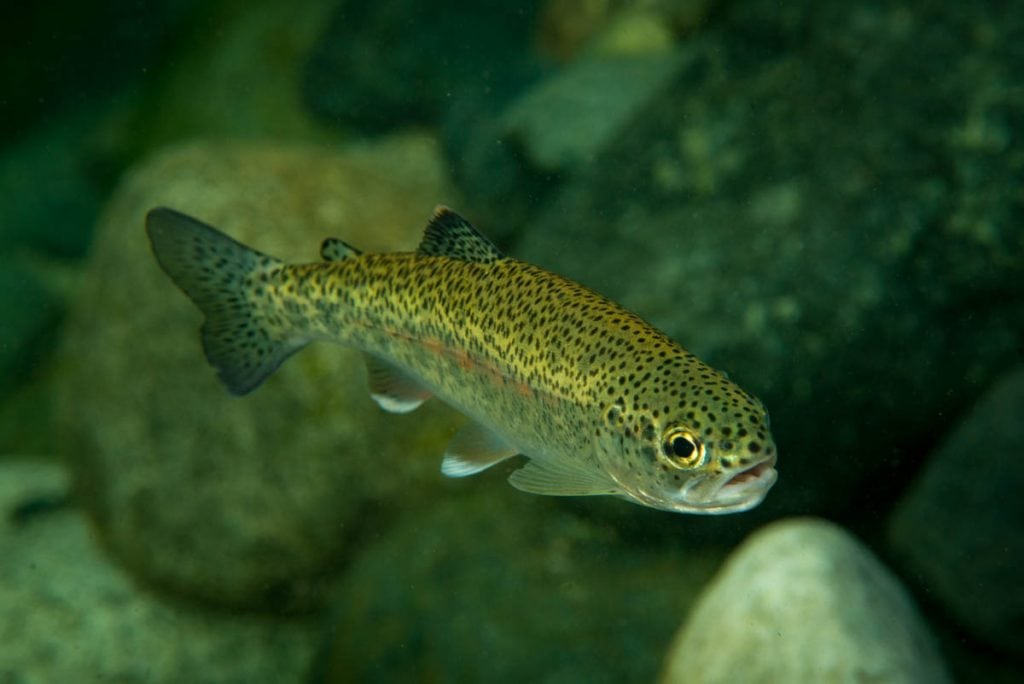Most trout such as lake trout live in freshwater lakes, rivers and streams exclusively, while there are others such as the rainbow trout which as such live out their lives in fresh water, or spend two or three years at sea before returning to fresh water to spawn, being called a steelhead (a habit more typical of salmon).
Trout usually live in cool water about 10–16 °C (50–60 °F), often among submerged objects or in riffles and deep pools. Trout that live in different environments can have dramatically different colorations and patterns. Mostly, these colors and patterns form as camouflage, based on the surroundings, and will change as the fish moves to different habitats.

Trout eat a host of aquatic insects, terrestrial insects, other fish, crustaceans, leeches, worms, and other foods. The food items that are most important to trout and fly fishers are the aquatic insects that spend most of their life cycles underwater in rivers, streams, and stillwaters.
Trout spawn between fall and spring and bury their eggs in a gravel nest scooped out by the female on a streambed. The few forms that migrate to sea between spawnings return to streams at this time. The eggs take two to three months to hatch, and the newly hatched trout, or fry, become known as fingerlings when they leave the nest and begin feeding on plankton.















